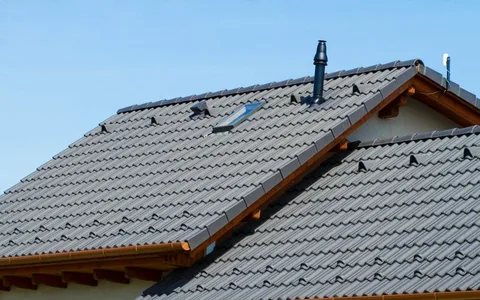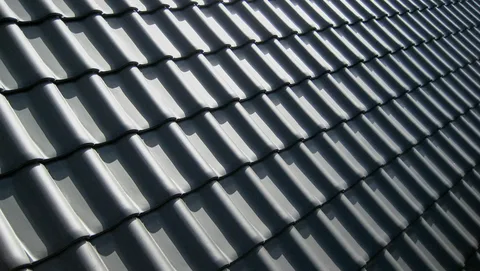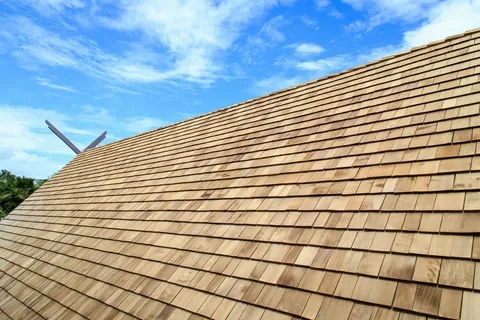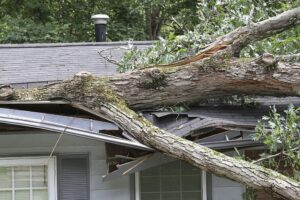A roof replacement is a major project for any business. Whether you’re dealing with an aging roof or have sustained damage due to a storm, planning a commercial roof replacement requires thoughtful consideration and careful preparation. The goal is not only to ensure that the new roof provides protection for your building but also that the project is completed on time, within budget, and with minimal disruption to your business operations.
In this blog, we’ll walk you through the essential steps of planning for a commercial roof replacement. We’ll cover everything from assessing the need for replacement to selecting the right contractor and managing the project effectively.
1. Assess the Condition of the Existing Roof
Before diving into a commercial roof replacement, it’s essential to assess the condition of your current roof. This initial evaluation will help determine whether a full replacement is necessary or if a simple repair might suffice. Consider the following:
- Age of the Roof: Roofs generally last between 20 to 30 years, depending on the material and climate. If your roof is nearing the end of its lifespan, it may be time to consider replacement.
- Signs of Damage: Look for leaks, visible wear and tear, missing shingles, or sagging. These can indicate that the roof is no longer functioning effectively.
- Energy Efficiency: If you notice higher energy bills, it could be due to the roof’s inability to provide adequate insulation or ventilation.
A professional roofing contractor can help you assess the roof’s condition through an inspection and give you a clearer idea of whether a replacement is necessary.
2. Establish a Budget
Roof replacement can be expensive, so it’s crucial to establish a budget that aligns with your financial capacity. Several factors will impact the cost of the project, including:
- Roof Size: The larger the roof, the more materials and labor will be required.
- Roofing Material: Different roofing materials come with varying price points. For example, asphalt shingles tend to be more affordable, while metal and slate roofs are more expensive.
- Labor Costs: Depending on your location, labor costs may vary. Additionally, complex roof designs may require more labor to install.
- Additional Features: If your commercial building has skylights, chimneys, or other special features, these will need to be factored into the cost.
By understanding the different variables and consulting with contractors, you can establish a realistic budget that fits your financial situation.
3. Choose the Right Roofing Material
Selecting the right roofing material for your commercial building is one of the most critical decisions you will make. The roofing material affects the longevity, energy efficiency, and overall appearance of the building. Here are some popular options to consider:
- Asphalt Shingles: Asphalt is a cost-effective option for low-pitch roofs. It offers good durability and can last between 20 and 30 years.
- Metal Roofing: Metal roofs are highly durable, fire-resistant, and energy-efficient. They are perfect for commercial buildings, especially in areas with extreme weather conditions.
- TPO (Thermoplastic Olefin): TPO is a popular flat roofing material known for its energy efficiency and UV resistance. It is often used for commercial buildings with flat or low-sloped roofs.
- EPDM (Ethylene Propylene Diene Monomer): EPDM is another popular option for flat roofs. It is known for its durability and ability to withstand harsh weather conditions.
- Modified Bitumen: Modified bitumen is a hybrid roofing material that combines the durability of asphalt with the flexibility of rubber. It is ideal for low-slope commercial roofs.
When selecting your roofing material, consider the climate of your area, your building’s architectural design, and your long-term maintenance goals.
4. Research Roofing Contractors
Choosing the right contractor is a vital step in the planning process. The quality of the installation can affect the roof’s performance and longevity. Here’s how to research roofing contractors effectively:
- Licensing and Insurance: Ensure the contractor is licensed and carries adequate insurance coverage. This protects you from liability if an accident occurs during the project.
- Experience and Reputation: Look for contractors with experience in commercial roofing. Ask for references or check online reviews to get a sense of their reputation and customer satisfaction.
- Written Estimates: Get multiple written estimates and compare them carefully. Make sure the estimate covers all aspects of the project, including materials, labor, and any additional services.
- Warranty: A reputable roofing contractor will offer a warranty on their work. This ensures that you can address any issues that arise after the project is completed.
It’s always a good idea to hire a contractor who specializes in commercial roof replacements, as they will have the necessary expertise and equipment to handle the scale of the project.
5. Plan for Business Disruption
A roof replacement can cause some disruption to your business operations, particularly if your building is occupied during the project. Here are a few ways to minimize disruption:
- Scheduling: Schedule the work for a time when business activity is low, such as during weekends or holidays. This will reduce the impact of noise, debris, and worker presence.
- Notify Employees and Tenants: Inform employees or tenants of the upcoming roof replacement well in advance. Make sure they understand the timeline and potential disruptions.
- Protect Property: If you have sensitive equipment, inventory, or machinery in the building, ensure that it is properly covered or relocated during the roof replacement.
- Contingency Plans: Have contingency plans in place for adverse weather conditions. Roofing projects can be delayed due to rain or snow, so it’s important to have a flexible timeline.
6. Obtain Necessary Permits
Most local municipalities require permits for roofing projects, especially for commercial properties. Before work begins, ensure that you and your contractor have obtained all the necessary permits. The contractor should be familiar with local building codes and regulations to avoid any legal complications.

The permitting process typically involves submitting the project plans to the local authorities for review. The permits are important because they ensure that the work complies with safety and building standards.
7. Ensure Proper Disposal of Old Materials
When replacing a commercial roof, you’ll need to dispose of the old materials. Proper disposal is essential for environmental responsibility and compliance with local regulations.
- Recycling: Many roofing materials, including asphalt shingles, can be recycled. Ask your contractor if they offer recycling services for the old roofing materials.
- Waste Management: Ensure that the contractor has a plan in place for removing debris from the job site. The area should be cleaned up daily to ensure safety for both workers and your business.
8. Monitor the Project
Once the roof replacement project has begun, it’s crucial to stay involved and monitor its progress. Regular communication with the contractor is key to ensuring everything goes according to plan. Here are a few things to look out for:
- Quality of Work: Ensure that the contractor is using the correct materials and following the agreed-upon installation processes.
- Timeline: Keep track of the project timeline and any delays that may arise. It’s important to stay flexible, but also to hold the contractor accountable for staying on schedule.
- Safety: Ensure that proper safety protocols are being followed to protect the workers and your property.
9. Inspect the Completed Roof
After the roof replacement is completed, inspect the work thoroughly. Make sure the roof looks and feels solid, and that there are no visible defects or signs of poor craftsmanship. If the contractor has provided a warranty, verify the details and ensure you have documentation of the work completed.
It’s also a good idea to schedule a final inspection with your roofing contractor to ensure that the roof has been installed correctly and that everything is in working order.
10. Ongoing Roof Maintenance
After the roof replacement, it’s important to establish a roof maintenance plan to extend the life of your new roof. Regular inspections, cleaning, and repairs can help you avoid expensive problems in the future. Consider setting up a maintenance schedule with your roofing contractor.
Conclusion
A commercial roof replacement is a significant investment, but with proper planning, you can ensure the process goes smoothly and that your new roof provides years of reliable service. By assessing the condition of your roof, establishing a realistic budget, selecting the right materials, hiring a reputable contractor, and managing the project effectively, you can minimize disruptions and enjoy peace of mind knowing your business is protected.

If you’re planning a roof replacement and need expert help, Atlas Roofing & Restoration is here to assist you. With years of experience and a commitment to quality, we can guide you through every step of your commercial roof replacement project. Contact us today for a consultation!




